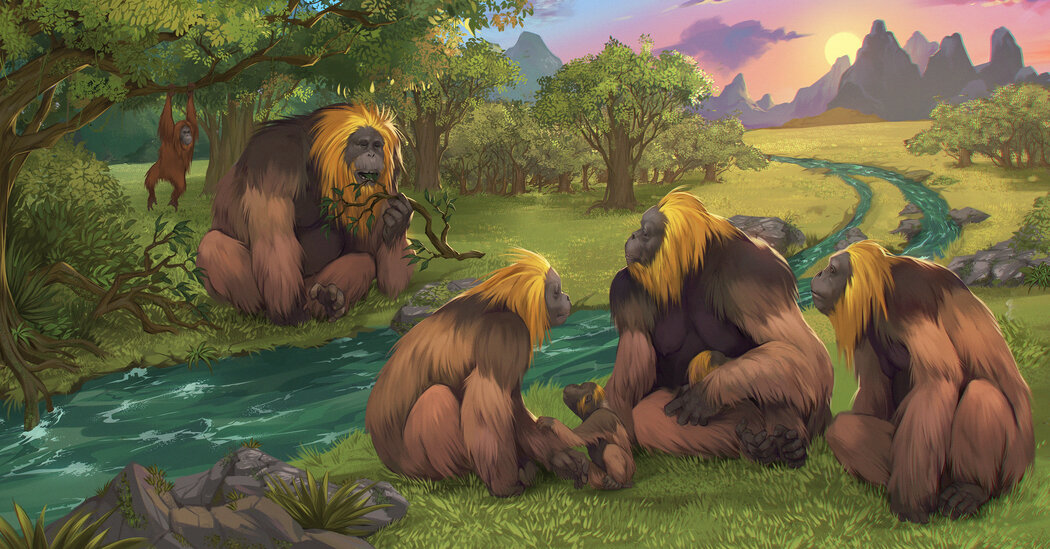Standing nearly as tall as a basketball hoop and weighing as much as a grizzly bear, Gigantopithecus blacki was the greatest ape to ever live. For more than a million years during the Pleistocene, Gigantopithecus roamed southern China. But by the time ancient humans reached the region, Gigantopithecus had vanished. To determine why these prodigious primates died out, a team of scientists recently analyzed clues preserved in Gigantopithecus teeth and cave sediment. Their findings, published Wednesday in the journal Nature, reveal that these nearly 10-foot-tall apes were most likely doomed…
Tag: Fossils
‘Not always king’: fossil shows mammal sinking teeth into dinosaur
Whether they had sharp teeth, vicious claws or were simply enormous, dinosaurs were creatures to be feared. But a newly identified fossil shows that, at least sometimes, the underdog bit back. Experts revealed the 125m-year-old fossil that froze in time after being taken on by a small mammal a third of its size. They are tangled together, the mammal’s teeth sunk into the beaked dinosaur’s ribs, its left paw clasping the beast’s lower jaw. Researchers said the discovery challenged a long-held view of early mammals as “fodder” for dinosaurs. Dr…
‘Gargantuan’: China fossils reveal 70-tonne dinosaur had 15-metre neck
A dinosaur that roamed east Asia more than 160m years ago has been named a contender for the animal with the longest neck ever known. A new analysis of bones from the beast’s neck and skull revealed that the dinosaur, known as Mamenchisaurus sinocanadorum, sported a neck 15metres long, or one-and-a-half times the length of a doubledecker bus. The fossilised remains of the creature were recovered in 1987 from 162 million-year-old rocks in the Xinjiang Uyghur Autonomous Region of north-west China, but the full length of the animal’s neck was…
Fossilized Fish Reveal Earliest Known Prequel of ‘Jaws’
Mention the ocean, and it’s hard not to think of jaws. The deep waters contain many tooth-lined mouths: the bear-trap maws of sharks and dolphins, the slack lips of shoaling and reef fish, the baleen-filter gape of enormous whales. Jawed fish eventually crawled out of the seas millions of years ago and gave rise to the jawboning vertebrates we are today. But when did such an evolutionary innovation arise? A pair of fossil beds discovered in Southern China suggest that the answer may lie tens of millions of years deeper…
‘Penis Worms’ May Have Been the First Hermits
Consider this evolutionary dilemma, faced by the aquatic and squishy: How do you survive in hostile, predator-filled oceans? Squid rely on speed or camouflage. Snails develop complex shells. Hermit crabs borrow those complex shells when other animals aren’t using them, trading them out for bigger models as they grow. This sheltering strategy was believed to have emerged 180 million years ago in the Jurassic Period, when hermit crabs’ ancestors appeared in oceans, said Martin Smith, a paleontologist at the University of Durham in England. But in a study published Monday…


